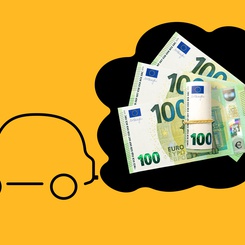In a new study, Guillaume Chevillon (ESSEC Business School) and Takamitsu Kurita (Kyoto Sangyo University) introduce a toolbox that offers a data-driven approach to estimating the cost associated with climate change control. Contrary to most evaluations that rely on ad hoc assumptions and simulations, Chevillon and Kurita base their analysis on actual historical data. Estimating long run equilibria between climate and the economy, their toolbox is able to gauge the associated costs, first in retrospective (counterfactual) analyses and hence to guide prospective policy making. As an example of a thought experiment, they wonder what would have happened if governments had coordinated in 1900 to control global temperatures and how much it would have cost in carbon abatement. This refers to technology that can curb the amount of carbon dioxide produced, for example through carbon capture storage or energy efficiency programs.
To explore this, the researchers compiled a new historical dataset allowing them to analyze the interplay between climate and the economy, going back 1000 years. Their modelling provides a formal test of causality, checking whether such policies are “quantitatively” feasible, i.e. whether economic variables can stabilize global temperatures over the long run. Their model also provides ways to assess their cost. Standard so-called “Integrated Assessment Models” feature a negative feedback loop from climate to the economy, whereby economic activity, including factors like consumption and the productivity of investment in capital, not only impacts but can also be affected by greenhouse gas emissions and increasing temperatures. All climate variables interact among themselves, from the human-induced or natural (volcanic) carbon content in the atmosphere (dioxide, methane…), the change in solar radiations absorbed by the earth system, to the energy stored in the deep and shallow oceans. They looked at which economic policies generated an equilibrium between economic activity and the climate.
In their experiments, Chevillon and Kurita consider how combinations of green (carbon-free) investment and brown (carbon-intensive) growth can lead to temperature stability: this provides an alternative to reducing all growth. It also allows us to look at carbon abatement as a way to control temperatures without resorting to drastic reductions in investment and consumption. In a hypothetical scenario where this kind of policy was introduced gradually in the 20th century to maintain temperatures at their 1900 level (had it been observed at the time), they found that temperature stability was achievable at the costing about ¾ of global GDP (at the level of 2008), meaning that the benefit to the climate was paid for by a cost to economic growth or very high investments on green technologies. While this may seem huge, the researchers treat this as a measure of the cost of climate inaction, the lack of investment in mitigating or abatement technologies. This suggests that massive carbon abatement policies need to be fully implemented today for the climate to benefit. With a need for climate preserving solutions, this research provides the first fully data-backed support for evaluating the cost of policies that governments can implement to protect our world.
Reference
Chevillon, G., & Kurita, T. (2023). What Does it Take to Control Global Temperatures? A toolbox for estimating the impact of economic policies on climate. arXiv preprint arXiv:2307.05818.









